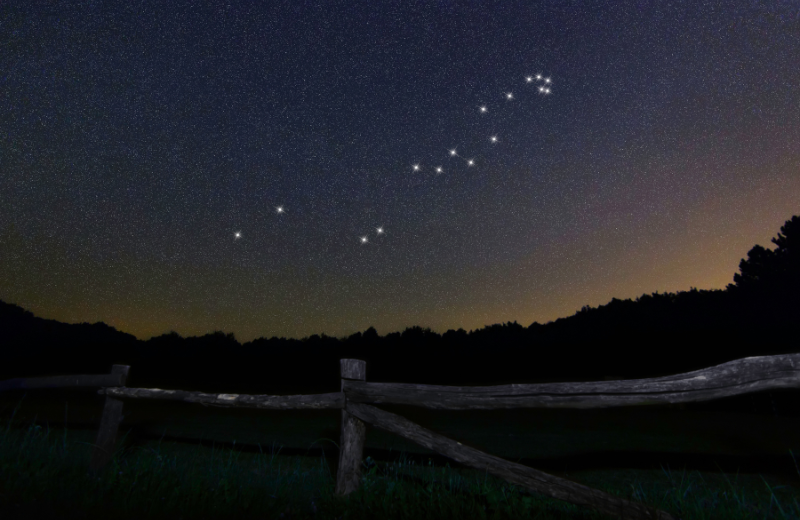The Hydra constellation is known for its sprawling size and captivating mythology. Whether you're a stargazing enthusiast, a mythology lover, or simply curious, this guide shares everything you need to know about Hydra, from its notable stars to how to view it.
Jump to:
Recommended for you!
Best SellersWhat is the Hydra Constellation?
Hydra, named after the mythical water snake, is the largest of all 88 recognised constellations. It stretches across a vast expanse of the southern sky, resembling the shape of a sinuous serpent. The name “Hydra” comes from Greek mythology, where it represents the many-headed serpent slain by Hercules.
The constellation Hydra has been a subject of intrigue for centuries, partly due to its sheer size. It covers over 3% of the celestial sphere, making it an awe-inspiring sight for astronomers and stargazers.
What Does Hydra Look Like?

Hydra resembles a winding snake, with a long, curved body extending across the sky. While its stars aren’t the brightest, their alignment forms a distinct shape once you know where to look. The head of Hydra is made up of a cluster of relatively bright stars, while its tail stretches far across the heavens.
If you’re wondering what Hydra looks like in the sky, imagine a meandering line of stars with a broader concentration at one end. Observing it requires clear skies and a bit of patience, as it isn’t the easiest constellation to spot without guidance.
How Far is the Hydra Constellation from Earth?
The stars in Hydra, like those in most constellations, vary significantly in distance from Earth. Some of its closer stars are a few hundred light-years away, while others lie thousands of light-years from us. One of Hydra’s most notable stars, Alphard (its alpha star), is approximately 177 light-years away. This star, also known as the “Heart of Hydra,” stands out due to its orange hue and brightness.
The Hydra Constellation Myth

The myth of Hydra originates in Greek mythology. The Hydra was a fearsome multi-headed serpent that terrorised the region of Lerna. As one of his Twelve Labours, Hercules was tasked with slaying the beast. The challenge lay in the Hydra’s ability to regrow two heads for every one that was severed. Hercules overcame this by cauterising each neck after cutting off a head, ultimately defeating the serpent.
Hydra's Stars
The stars in Hydra constellation contribute to its reputation, even if they aren’t among the brightest in the sky. The most significant stars in Hydra include:
- Alphard (Alpha Hydrae): Known as the “Heart of Hydra,” Alphard is the brightest star in the constellation. Its name means “the solitary one,” as it shines alone in a relatively dim section of the sky.
- Beta Hydrae: A blue-white star located near the tail of Hydra, adding a faint glow to the constellation.
- Gamma Hydrae: A yellow giant star, contributing to the serpent’s winding shape.
Hydra is also home to a variety of other stars that, while less prominent, collectively form the constellation’s snake-like appearance.
Nebulae in the Hydra Constellation
Hydra also contains fascinating deep-sky objects. Some notable ones include:
- The Ghost of Jupiter Nebula (NGC 3242): A striking planetary nebula that resembles the gas giant planet Jupiter in its appearance.
- Hydra Cluster (Abell 1060): A dense cluster of galaxies located within the constellation, offering a glimpse into the vastness of the universe.
These nebulae and clusters make Hydra a favourite for amateur astronomers with telescopes.
Finding Hydra in the Sky

To locate Hydra, it’s best to view it between January and May, when it’s most visible in the southern hemisphere. Its head lies near the constellation Cancer, while its tail stretches all the way to Libra. The constellation spans an impressive portion of the night sky, but its faint stars can make it tricky to spot without a star map.
The best place to see the Hydra constellation is in an area with minimal light pollution. Using a telescope or binoculars can help you distinguish its features, especially its brighter stars and nebulae.
Recommended for you!
Best SellersFun Facts About Hydra
- Size and Scale: Hydra is the longest constellation, stretching across 102 degrees of the sky.
- Mythological Connections: In addition to Greek mythology, Hydra is also associated with water and serpents in various cultures, symbolising renewal and transformation.
- Hydra in the Milky Way: While parts of Hydra lie within the plane of the Milky Way, the constellation also offers views of galaxies far beyond our own.
- Astronomical Highlights: Alphard is one of the few bright stars in Hydra, but the constellation also contains several variable stars that are interesting to observe.
Study Astronomy for £29
If the Hydra constellation has sparked your curiosity, why not explore more about the stars and the cosmos with our Astronomy Diploma Course at Centre of Excellence? This course offers a detailed understanding of the universe, from constellations and star types to the fundamentals of space observation. Perfect for all budding astronomers, the course is available for a discounted price of £29.













